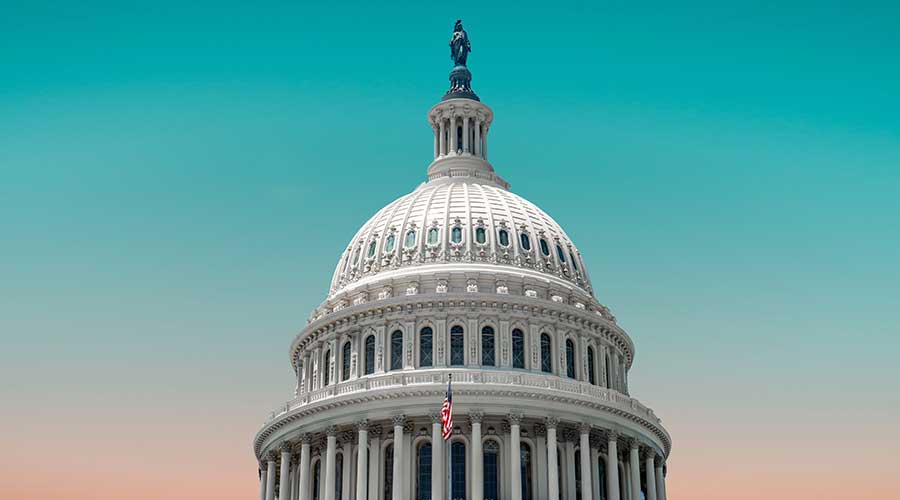Stay updated on news, articles and information for the rail industry
March 2020
Rail News: Federal Legislation & Regulation
For the first time in 15 years, grade crossing safety gains a hearing

By Julie Sneider, Senior Associate Editor
For the first time in 15 years, the House Subcommittee on Railroads, Pipelines and Hazardous Materials held a hearing to address grade crossing safety.
Subcommittee Chairman Dan Lipinski (D-Ill.) called the Feb. 5 hearing as part of the panel’s work on legislation to reauthorize the Fixing America’s Surface Transportation (FAST) Act. In his opening remarks, Lipinski said crossing safety is one of his top priorities in reauthorization legislation, including the issue of federal funding for grade separation and quiet zone projects.
Due to the high number of railroads that operate in the Chicago region, Lipinski’s district has the most crossings of any congressional district. Every day, his constituents experience issues — such as blocked crossings, train-horn noise and railroad property upkeep — that come with living near crossings, he said.
During the hearing, Lipinski and House Transportation and Infrastructure Committee Chairman Peter DeFazio (D-Ore.) both noted the high cost of projects designed to improve crossing safety.
“With only $245 million available nationwide this year for projects through the Section 130 Railway-Highway Grade Crossing Program, many states struggle to cover the costs of multimillion-dollar projects,” DeFazio said in prepared opening remarks.
A plea for more project funding
To help communities cover some of those expenses, Democrats plan to propose a funding increase for crossing safety improvement projects through Section 130 grants under the reauthorization legislation’s rail title.
Jason Morris, assistant vice president of safety and environment at Norfolk Southern Corp., told the subcommittee that Congress should maintain Section 130 funding at least at current levels. He also recommended increasing the crossing closure incentive cap to $100,000 from $7,500; and using federal policy to incentivize states to bundle crossing projects into a single grant application under federal programs such as Better Utilizing Investments to Leverage Development, Infrastructure for Rebuilding America or Consolidated Rail Infrastructure and Safety Improvements.
Also testifying at the hearing was Karl Alexy, associate administrator for railroad safety and chief safety officer at the Federal Railroad Administration (FRA). Alexy described the agency’s new grade crossing business plan, which outlines how it will support technology aimed at improving safety.
Written as a complement to the FRA’s strategy to stop trespassing on railroad property, the business plan identifies federal funding options for projects designed to reduce collisions at crossings.
Although the number of crossing incidents and accidents has remained steady for the past decade, crossing and railroad trespasser accidents still account for 97 percent of all fatalities along U.S. railroad rights of way, Alexy said.
Regarding community concerns over blocked crossings, Alexy testified that FRA Administrator Ronald Batory has asked Class Is and major railroad holding companies to minimize such instances.
In December 2019, the agency launched an online portal for the public to report blocked crossing incidents. The FRA will analyze that data and share it with stakeholders to help develp local solutions to reduce and prevent trains from blocking crossings, Alexy said.
Keywords
Browse articles on House Subcommittee on Railroads Pipelines and Hazardous Materials hearing on grade crossing safety Subcommittee Chairman Dan Lipinski (D-Ill.) Fixing America’s Surface Transportation (FAST) Act House Transportation Committee Chairman Peter DeFazio (D-Ore.) Section 130 Railway-Highway Grade Crossing Program Jason Morris Norfolk Southern Corp. Karl Alexy Federal Railroad AdministrationContact Progressive Railroading editorial staff.


 2025 MOW Spending Report: Passenger-rail programs
2025 MOW Spending Report: Passenger-rail programs
 Gardner steps down as Amtrak CEO
Gardner steps down as Amtrak CEO
 Guest comment: Oliver Wyman’s David Hunt
Guest comment: Oliver Wyman’s David Hunt
 Women of Influence in Rail eBook
Women of Influence in Rail eBook
 railPrime
railPrime








